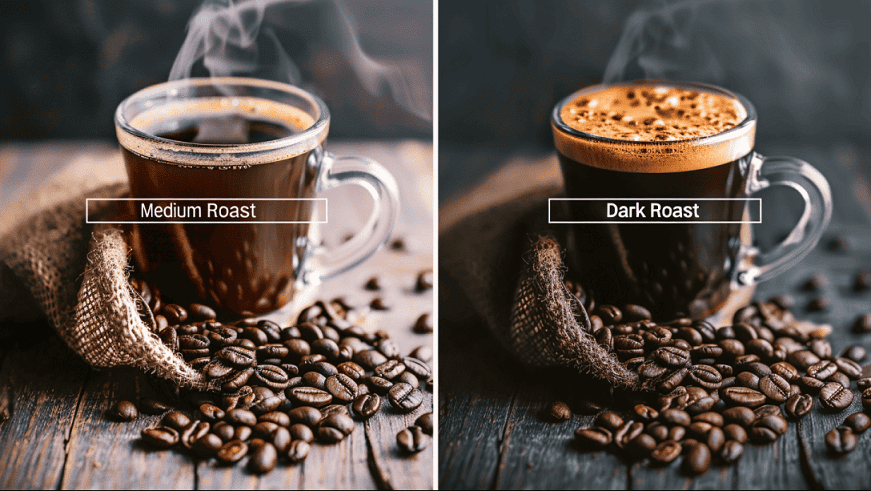Roasted fresh in Texas. Small-batch, organic, and fair trade.
When you roast coffee for a living, you stop seeing “medium” and “dark” as settings on a dial, they turn into personalities. Every batch that spins in the drum has its own rhythm. Some beans want to dance in the middle of the flame, where sweetness and acidity settle into balance. Others hang on longer, soaking in heat until they carry that deeper, darker edge.
Our medium roasts are where harmony lives. The body is smooth, the acidity lively, and the flavor stays loyal to the bean’s origin, think toasted nuts, a little stone fruit, a whisper of chocolate. It’s the cup that feels honest and easy to drink every day.
Our dark roasts tell a bolder story. They walk in with a little swagger. But here’s the line we won’t cross: we stop before the oils coat the surface. We take the roast right up to the second crack, that crisp, rhythmic point where sugars fully caramelize and the beans begin releasing oils naturally and slowly, then we end the roast. That restraint keeps the cup bold, not burnt: richer body, velvety texture, depth that leans into cocoa and charred sugar without tipping into bitterness.
Why does that matter? Once beans turn shiny and oily on the outside, freshness falls off faster and “roast” flavor can bulldoze everything in its path. By stopping at second crack, we let the roast speak and keep the coffee’s soul intact.
The real difference isn’t just color or temperature, it’s intention. Medium lets the bean speak; dark lets the fire whisper back. Both are beautiful in their own way, and neither needs to shout.
Whether you reach for the balance of a medium roast or the warmth and weight of a dark roast, every bag is roasted fresh, right here in Texas, by people who believe coffee should still mean something.
FAQ: Medium vs Dark Roast Coffee
What makes a dark roast coffee “dark”?
It’s roasted longer, up to the second crack, where sugars caramelize and oils begin to emerge. We stop right there, bold flavor, smooth body, no burnt taste. That’s what separates Headcount’s dark roasts from beans roasted until they shine with oil on the surface.
Does dark roast have more caffeine than medium roast?
Not really. Caffeine levels stay close. Medium roasts can have slightly more by weight since they’re denser, but the difference in your cup is small enough that you’ll never feel it.
Which roast is smoother?
Medium roasts usually taste smoother and more balanced. Dark roasts trade a little smoothness for depth, bringing those cocoa, caramel, and subtle smoky notes that define a bolder cup.
Why stop at second crack instead of roasting longer?
Once you go past second crack, oils rush to the surface, flavor flattens, and the beans age faster. By stopping there, we keep the bold flavor without bitterness and lock in a longer shelf life with better freshness.
How should I brew medium vs dark roasts?
Medium shines in pour-over or drip methods where nuance shows through. Dark roasts love espresso or French press, brews that bring out body and depth. Either way, grind fresh and enjoy it soon after roasting for the best flavor.
More From Headcount Coffee
Why Freshly Roasted Coffee Matters
How to Use a French Press (Like a Pro)
Sangre por Sangre – Part I: The Black Book of Lugo
(One of many brewing guides shared by Headcount Coffee — a Texas roastery where coffee and conversation meet.)

0 comments